#the second one starred a young David Hayter
Text
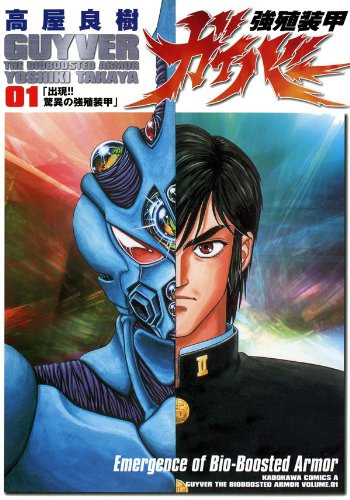
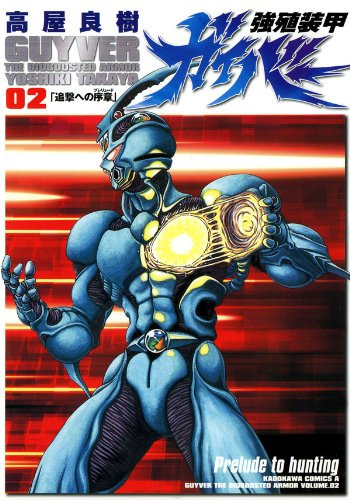

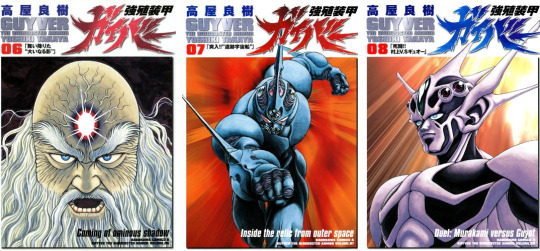






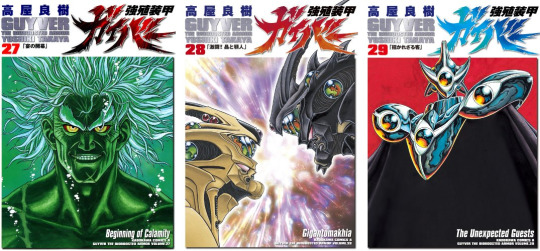

Kyoushoku Soukou GUYVER[強殖装甲ガイバー]
The Bio-Boosted Armor GUYVER
#manga covers#kinda surprised i hadnt gone back for guyver before now#technically ''ongoing'' just on hiatus#probably definitely a dead series#but it ran with some irregularity from 1985 til 2016#and that's a pretty bonkers lifespan for a manga like this#it's had an OVA in the 80s#and a TV series in the 200Xs#it even had two live action movies in the 90s#the second one starred a young David Hayter#he even used the protagonists name#Sean Barker#as a working alias during the rest of his career#oh and Mark Hamill was in the first one#he was featured prominently on the promo art as if he was a main character#he was not#also they turned him into a slug
3 notes
·
View notes
Note
Do you know any Tokusatsu anime like Garo the Animation series and SSSS Gridman?
That directly relate? Beyond those two? It’s unfortunately kind of limited.

Closest next case would be Kikaider the Animation which I talked about WAAAAAAAY back in 2014, but it’s more of an adaptation of Shotaro Ishinomori’s manga Adaptation of the original Live-action series. It’s not bad, but you kind of need to look at it at the right angle.
Ultraman has also had a couple animated series Tsuburaya’s been part of before SSSS Gridman happened; specifically –
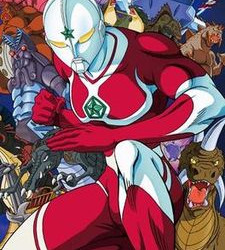
“The Ultraman” from 1979, which actually was one of the things that helped put Sunrise (Of Gundam and Brave series fame, to bring things fully back around and to refute those who thought the Masami Obari brave series references in SSSS Gridman were out-of-place) on the map as an anime production company. “The Ultraman” referred to in the title is Ultraman Joneus.

There’s also a kamen Rider Sd special…that I personally Find to be terrible as it’s a bad parody of the showa heroes where a lot of modern-production misconceptions about the showa riders seems to originate from…’Least if it’s not outright Hearsay. but others hold a more positive opinion of it than myself.

As Far as anime series who act like a Tokusatsu series? I’d have to run down most of the Tatsunoko library with Gatchaman, Hurricane Polymar (Still haven’t seen the recent live adaptation directed by Koichi Sakamoto, sadly), Tekkaman (both classic and Blade/Teknoman, I love me some Tekkaman Blade) and The various Casshern series.

Disclaimer on that: don’t watch the 2013 Gatchaman Movie. Despite having a young Tatsuomi Hamada (Ultraman Geed) and Tori Matsuzaka (shinken Red) in it? the movie is trash. Casshern also has a live-action adaptation, and I have it…but I’ve not watched it yet.

Other picks? I LOVE Bioboosted Armor Guyver, and when going back to it it really feels like a precursor to the modern J-Drama angle for Tokusatsu Keiichi Hasegawa ended up being responsible for influencing it into…But sadly Despite all it’s adaptations being good at doing different things (bar the first live film which is crap), it’s best read in it’s manga form since they always cut off Very early in Guyver’s storyarcs. At this point we’re just worried it’s creator’s going to die before he manages to wrap the series considering it’s older than I am and yet is STILL being published a chapter a month. If you can Find them though, The original Theatrical OVA had elements of it’s plot back-adapted into the manga, the 13-ep OVA series was the first voice-acting credit for the legendary Steve Blum, the second live-action film Stars David Hayter (AKA Solid Snake) and is a good one-off film, and the 26-ep series from the 2000′s which was Dubbed by Funimation is the best adaptation the story’s had to date. Hopefully there’ll be one last one if the series concludes.
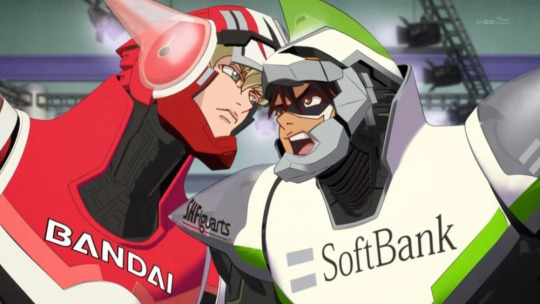
Tiger and Bunny–Sadly not gotten to it myself yet, on my list, told it’s pseudo-Kamen Rider-like.Samurai Flamenco–same situation as Tiger and Bunny.
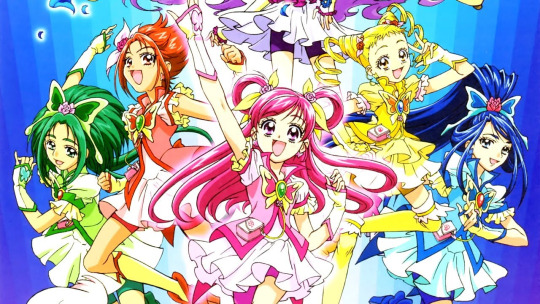
The Pretty Cure (Precure) franchise is also the magical girl anime equivalent to Tokusatsu series as well–many consider it the third show in the superhero time block on TV Asashi–but an equivalent argument is made that it’s just banking off of the Sailor Moon Archetype and less being a Magical girl sentai series.That’s all I can name off the top of my head that I’m aware of. probably others out there though.
5 notes
·
View notes
Text
Review Game Super Smash Bros. Ultimate
Smash Bros. has always been a showcase for Nintendo’s other work. Since introducing the 12 core stars of the N64 original - each representing Nintendo’s biggest franchises and most beloved cult hits - the series has consistently ballooned to include characters old, new, forgotten and tangential. Items, Assist Trophies, stages and soundtracks have become part of the firmament, with almost every one a reference to something someone out there will remember; an unnatural history museum, if you will.
But Super Smash Bros. Ultimate feels different. Suddenly this feels more like a museum built to celebrate Smash Bros. itself.That’s most obvious in its key hook - the game comprises every character the series has ever included in its playable roster, plus a couple more for good measure. That’s 65 all told, not including the newly-coined “Echo” characters like Dark Pit, Lucina and new addition Daisy, each too complex to be a palette swap, but too similar to be counted as a whole new roster pick.
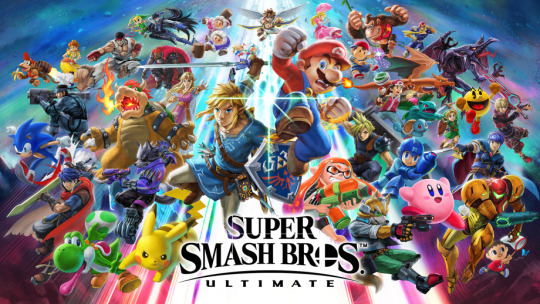
It’s an almost absurd number of characters for a fighting game - Nintendo Treehouse’s Nate Bihldorff jokingly says balancing that many characters is exactly the kind of task that puts him off becoming a developer - but it’s necessary to get the point across. For the first time, Smash Bros. isn’t trying to impress by including the characters you know from other Nintendo games - it’s impressing by including characters you know from Smash Bros.
By this point, I’d wager most people know the Ice Climbers better as Smash characters than NES platforming heroes - the fact they’re back feels strangely special. The series’ fixation on Link comes to a head by including three entirely separate versions of the character in a single game for the first time - Toon Link, Ocarina’s Young Link, and regular ol’ Link (available in Green Tunic and Champion Tunic guise). Somehow, series mastermind Masahiro Sakurai even convinced Konami to let him re-include Solid Snake, complete with a performance from original voice actor David Hayter (although Nintendo won’t tell us if it comes from existing recordings or a new session).
Hell, even one of Ultimate’s brand new roster picks, Metroid’s Ridley, is a Smash Bros. in-joke - fans have been clamouring for him to be playable for over a decade by this point. It was all worth it for the hilariously strange sight of him clapping for the victor with his horrible pterosaur hands when he loses a match.
Amazingly, after going hands-on with the game I can say that nostalgia for the series itself actually benefits the gameplay. I laughed out loud when I realised that I remembered how to play Ice Climbers because my Melee muscle memory had kicked in. That’s not to say these are just uprezzed models from the old games - I equally know I’m going to have to relearn my beloved Little Mac, who feels a little less clumsy, but loses the sheer, brutal efficacy of the Giga-Mac transformation Final Smash I had access to in Smash Bros. for Wii U and 3DS. Like returning to a childhood home years later, everything feels the same, but different.
See more Diggy 2
Play now 60 Second Burger Run
Ultimate doesn’t quite repeat its roster trick with the rest of Smash Bros.’ key components. The game definitely won’t include every previous stage, and it’s still not clear - even to Nintendo Treehouse - if every past item and Assist Trophy will make it in. That’s not to say there isn’t a pleasure to getting to play overhauled versions of previously 3DS-only stages like Tortimer Island, and there will absolutely be returning arenas from the older entries, rejigged with modern looks and in-play tweaks. Again, it’s about making the series’ hallmarks feel new again.
It’s not all backward-looking, however. There are brand new treats in store for Nintendo obsessives. Sakurai and co. have continued their amazingly nerdy work by reflecting the old and the new of the Kyoto gaming institution.
Take Sukapon, the Rayman-like robot from Japan-only Famicom fighter, Joy Mecha Fight. Before now, its only appearance in a modern Nintendo game was in, well, Super Smash Bros. Brawl (as a humble sticker). Now, it’s an Assist Trophy, using its floating limbs to pummel fighters across multiple levels of a single stage.
On the more modern side, Inklings are studiously implemented to feel familiar to players of Splatoon, even while in a completely different genre of game. Coating other players or the stage itself in ink offers an advantage, and their range of borrowed weaponry makes them feel versatile at range or up close. It’s not a slavish implementation, though - you don’t have to have painted the floor to drop down and refill your ink in squid form, for instance.
That careful implementation comes straight from the top of development: “It's because Mr. Sakurai loves video games,” says Bihldorff. “Obviously, he's a great appreciator of Nintendo and our franchises, but he just loves video games in general. I guarantee you [the new Bomberman Assist Trophy] is treated the same way as any normal fighter in terms of accuracy, making sure all his moves are true, and all his design is the way it's supposed to be. He really values that.”
That extends to the game’s stages too, and I played two new additions in the form of Zelda: Breath of the Wild’s Great Plateau Tower and the Splatoon-inspired Moray Towers. The former is pretty simple, a Battlefield-like condensed bottom level with an upper platform revealed by dealing damage to the tower’s spire itself. I did find myself a little distracted (in the best way) by the game’s Old Man character repeatedly landing on and jumping off the tower with his own glider.
Moray Towers is more interesting, reflecting a portion of the brilliant Splatoon 2 map with a series of switchback ramps, potentially splitting players across multiple levels but always enticing them into ridiculously tight brawls on a single section of the map. In a gorgeous little touch, the whole stage is splattered with paint just before you begin - more proof of Sakurai’s own Nintendo fandom.
Since Melee, it’s been clear that the backward-looking “museum” element is only a part of Sakurai’s ambition, however. The Nintendo Direct made a few high-level tweaks very clear - perfect shields, a formalised ‘short hop’ ability (achieved by just pressing jump and attack together) and the return of directional air dodges - but, on a wider scale, Ultimate is undoubtedly aiming to be a more robust competitive experience.
“There is a very, very strong and healthy competitive scene,” says Nintendo’s Bill Trinen. “[The developers are] definitely looking at the way that those [professional] players play and, just like the way they look at the way casual players play, they take an amalgam of information and blend that together to make the uniqueness that is Smash Bros.”
Even after 20 minutes with the game, it’s obviously a faster, more technical game than before. Characters buzz around stages, both moving and reacting faster, and a four-player match becomes a hive of activity - it will take some getting used to for less skilled players (and, to be totally clear, I mean me here). In a neat touch, 1v1 matches will now see fighters do more damage to each other, to keep up a more frantic pace of K.O.s, even across larger stages. Nintendo won’t say it outwardly, but it feels extremely clear that the dominance of Melee on the competitive scene is something it wants to end after December.
Incidentally, Nintendo also won’t say a word about a single player mode right now - we only got to play a cut-down version of local multiplayer (and, guess what, Nintendo won’t talk about online yet, besides saying it’ll be included).
What they will tell us, repeatedly, is that Ultimate is a brand new game, created specifically for Switch, but there’s no denying its similarity to the series’ last incarnation. From menus to visuals, this is an iteration on the Wii U version in particular. It’s not a huge problem - as ever, Switch’s versatility adds value by itself - but those looking for something truly different won’t find it here.
But that’s probably not the point. Since Melee, Masahiro Sakurai has said that the next Smash Bros. game will probably be his last. Each entry has been the biggest, arguably the best and, probably, the most exhausting to make. Each one has felt like a rundown of Nintendo’s history, a successful advance on the series’ weirdo mix of fighting and pinball and, yes, a slap in the face for those who want a playable Waluigi. All of that remains true.
But ‘Ultimate’ is a subtitle that definitely suggests we’re reaching an endpoint - if that’s any indication, then the next Smash Bros. will be a museum not only to celebrate Nintendo, or Smash Bros., but Sakurai himself. It’s already beginning to feel like a fitting tribute.
0 notes